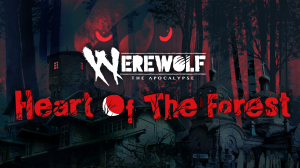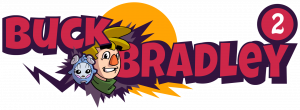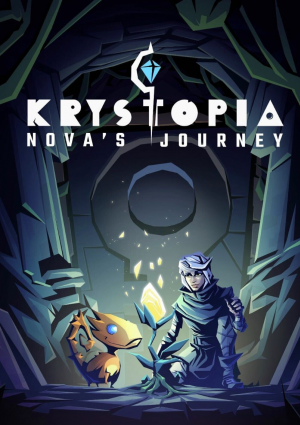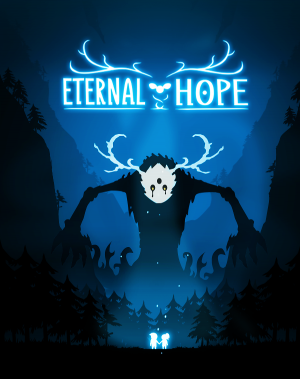Review for Werewolf: The Apocalypse – Heart of the Forest
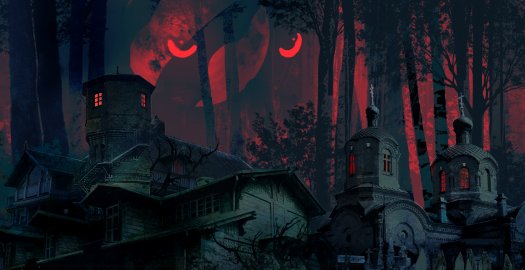
On the surface, Werewolf: The Apocalypse – Heart of the Forest is a visual novel in the most literal sense. It’s a book fed to you, paragraph by paragraph, with little in the way of gameplay save for clicking through the text. Look deeper, however, and you’ll see it is in fact a role-playing game, encouraging players to adopt the persona of their avatar and become an active participant in the narrative. Werewolf presents a well-written and engaging story that could stand alone as a novella sans gameplay, but its greater impact is ultimately born of the constant and meaningful interaction it asks from you, keeping the focus solely on storytelling and role-playing rather than demanding constant micromanagement of stats.
Based on the popular Werewolf: The Apocalypse tabletop RPG in the World of Darkness universe, this is the story of a young woman named Maia, a medical student on a trip to Poland with her friend Anya. The tale takes place in the small town of Białowieża, where the two friends are looking forward to a much-needed break from school, though Maia’s motivation for the trip isn’t strictly tourist. Her grandfather came from Białowieża, and his history is spotted to say the least. Maia wants to investigate her heritage while she’s here, though another more obscure reason lies beneath that motivation as well.
The game opens in one of Maia’s dreams, in which she’s running through a forest, occupying a body she does not recognize, partaking in acts she finds both repulsive and invigorating, before waking up on the bus to Białowieża. Upon arriving at their stop, Anya and Maia begin exploring the town proper. Throughout her time here, Maia will have the opportunity to visit places that hold clues relevant to her family history. However, even as she does so, another matter is unfolding in the background. The forest (Puszcza), a national park, is under assault. Logging has begun, and the community is split on the benefits and harm of work being done in the area. Maia and Anya will meet numerous characters along the way, though whether they become extras in the background or fully developed friends (or foes) is entirely up to the route players choose – and there are a staggering number of routes to choose from.
In selecting a goal to pursue, other objectives inadvertently suffer. Taking an active role in protecting the forest, for example, could help uncover the source of Maia’s dreams, but may find her getting more wound up in local politics, stealing away the time she has to investigate her heritage. Werewolf has no dead ends, but it does demand decisive action. The number of branching paths is remarkable, and in my two playthroughs I ended up on entirely different paths, swapping both alliances and enemies between runs. You cannot see every narrative thread or subplot to completion in a single playthrough, and you’ll want (and need) to play through it multiple times in order to explore all the quest lines.
Time of day and place constantly need to be a primary focus, as events unfold around you regardless of whether or not Maia is there to contribute. Trees that fall in the forest when Maia is not around to hear them most definitely still make a sound, and in knowing the outcome of the story from one playthrough, players can better plan subsequent runs should they fail to fulfil their intended goals the first time around.
Choices are presented every few paragraphs, which is a great way to keep players engaged while reading through what amounts to a figurative wall of text. How you treat different characters opens and closes options for resolving conflicts. It's impossible to have everyone on your side, but that doesn’t mean you can’t be diplomatic, or deceitful. On my first playthrough, I befriended a journalist named Erika. During a protest against logging in Puszcza, the group I joined was split on how to approach the confrontation: peacefully or aggressively. Though I ultimately had to choose a side, being on good terms with Erika allowed me to stage something of a dramatic entrance, coordinating the whole thing with her to get the intended story out to the press.
This particular decision had a domino effect, changing public opinion and forcing politicians to negotiate with members of the cause by the end of the game. It wasn’t without repercussion, however. In making alliances to save the forest, the story ended with Maia and Anya drifting apart, not to mention leaving unexplored avenues of other objectives. In my second playthrough, I once again took to protecting Puszcza as my main priority, though I did so through more direct and often aggressive means. This too had its slew of consequences, resulting in wholly new scenarios and alliances with characters I had only seen in passing, or not at all, my first time through.
While the game doesn’t inundate you with statistics, there are several meters and gauges to manage while playing. Maia has three main stats of importance: Health, Willpower, and Rage. She begins with a three-point limit in each, with choices made throughout the story either adding to or subtracting from the total (as indicated beside their respective choices). Health is crucial, as when Maia is injured, she may become too weak to act the way you wish, forfeiting certain choices. Willpower can suppress responses related to ego or anger, giving a more balanced approach, with Maia actively listening to other characters’ points of view or resisting the temptation to act violently in tense situations. Conversely, Rage can lead to rash and unwarranted action with immediate effect. An example of a Rage-inspired decision could be anything from leaving an agreed-upon meeting point after your date didn’t show up on time, or getting into a fight. Any one action you (or other characters) may find unpalatable could just as likely be seen as strong or confident by others, making your response in any given scenario more than just a matter of personality, but possibly even a matter of reputation and survival.
Where the challenge comes in, and ultimately what qualifies Werewolf as a game and not just a “choose your own adventure” novel, is in managing these elements. You must not only decide on a goal for Maia to pursue, but navigate how best to shape her personality and actions with those who can help her achieve it. Being angry all the time may seem like a good approach for forcefully dealing with everyone in your way, but it may also lead your reserve of Rage to run dry and alienate moderate-tempered characters who could have otherwise helped you. Likewise, opting to be diplomatic may seem like a good approach, but if she spends her reserve of Willpower, Maia may fold under stress, harming her reputation. Thus, attempting to keep your Rage and Willpower in check may lead you to occasionally pick a dialogue option out of character, potentially setting you off track, but at the price of building reserve for a perceived conflict later on.
Additionally, there are metres related to story objectives and personality traits. Destiny, for example is a trait beholden to your choice to uncover Maia’s role in the unfolding Puszcza drama. The game will let you know when you have progressed one of these traits only after you have made a choice. Likewise, Maia’s Personality Assessment sheet measures things like how inspiring or cunning she is. Stats here are a result of your actions, and like objective traits, you are only notified of one of these stats increasing after a choice has been made. Accumulating story and personality traits are reflected in Maia’s persona as you progress, opening (or closing) choices based on her location and mindset.
Roughly halfway through the game, regardless of your decisions, Maia discovers the source of her dreams, learning she is a werewolf (not really a spoiler: it’s right there in the title). This comes with its own set of baggage, forcing you to navigate the politics of the Puszcza werewolf packs while also juggling her personal relationships and an impending clear-cut of the forest. After this, you are sometimes given the option to (temporarily) change from human form to several different wolf morphs. How Maia is able to interact with people is (not surprisingly) limited in these forms, though again, it all depends on how you want to role-play. Transforming into a Crinos allows you to rip and tear through anyone, but also runs the risk of exposing the secret of your kind and could have grave effects on your pack and personal well-being. (I can only imagine what an unfriendly Erika would have made of me pulling the loggers apart like cheese-strings.)
There is no physical combat system to worry about, with the option to fight being treated the same way as the ability to sneak, negotiate, or use any other skillset, as per World of Darkness norm. Engaging in violence obviously puts Maia’s welfare more at risk than a stroll through the town square, however, making Health yet another factor for you to consider when navigating conflict. If you’re injured, certain choices allow you the opportunity to restore Maia’s Health bar. While I never let Maia’s Health empty out completely, I did run into a situation where not having enough in reserve prevented me from making certain choices related to physically demanding actions.
The backdrop for all this action is nicely illustrated. The game screen is split into three main parts. Narrative text takes up the left-hand side, scrolling every few paragraphs to give way to a set of choices for you to select from. The right-hand side displays collages of the events taking place via hand-drawn images and still renders. These graphics are often slightly animated, drifting or shaking as you read. Sometimes they display characters and locations, while other times they feature more obscure and surreal fare, like when Maia is dreaming. It works beautifully, with bleeds of ink and paint making for a lively sort of animated scrapbook. The right side of the screen is also reserved for certain choices, like changing locations on the map or choosing a werewolf form.
The top of the screen is bordered with a bar displaying Maia’s stats. This bar can be expanded to reveal her full character sheet, communicating information like the attitudes of other characters towards Maia (whether they are loyal, sympathetic, etc.), her personal traits, and her progress on story objectives. It's easy to navigate, and the game is controlled by mouse alone, requiring only that you click about the screen, referring to your stats as needed in order to judge the best choice presented.
Audio is just as effective, if muted, reflecting what’s happening in the text. Calm, slow melodies repeat during bits of regular conversation, while the sounds of screams and grunts play overtop beating drums during action sequences. It’s not the type of music you’d necessarily listen to outside the game, but it works perfectly while reading, setting the mood and raising tension when conflicts arise. There is no voice acting in Werewolf, but I’m actually glad the developers went that route. Though you get peeks at what the different characters look like, leaving what they sound like up to one's imagination is far more enjoyable.
Overall, this is an immersive role-playing experience. Its terrific writing and constant player engagement make it exciting, while the subtle but clever use of stats to funnel player agency heightens the suspense. Navigating the many branching options to fulfil your intended destiny for Maia will likely take multiple tries, but with the script as compelling as it is, and the number of pathways as deep and diverse as they are, that’s hardly a big ask.
Having said that, this is essentially just a codified World of Darkness RPG scenario. That’s no small feat, but it is important to note, as those looking for a more traditional adventure game will likely be disappointed. You have to like reading in order to get the most out of this game. It’s been dressed up with some great art and music, but with no puzzles to solve save for finding a way to achieve your intended objective, this is a game for pen and paper RPG fans first and foremost. My first playthrough took just under two hours, and my subsequent playthrough didn’t run much shorter. It's amazing to see how differently loose threads can tie up by game’s end, showing both the rewards and consequences of your actions. If you’re in the mood for some grade-A role-playing, or just a really immersive interactive story, Werewolf: The Apocalypse – Heart of the Forest is the perfect book – erm – game, to curl up with.


